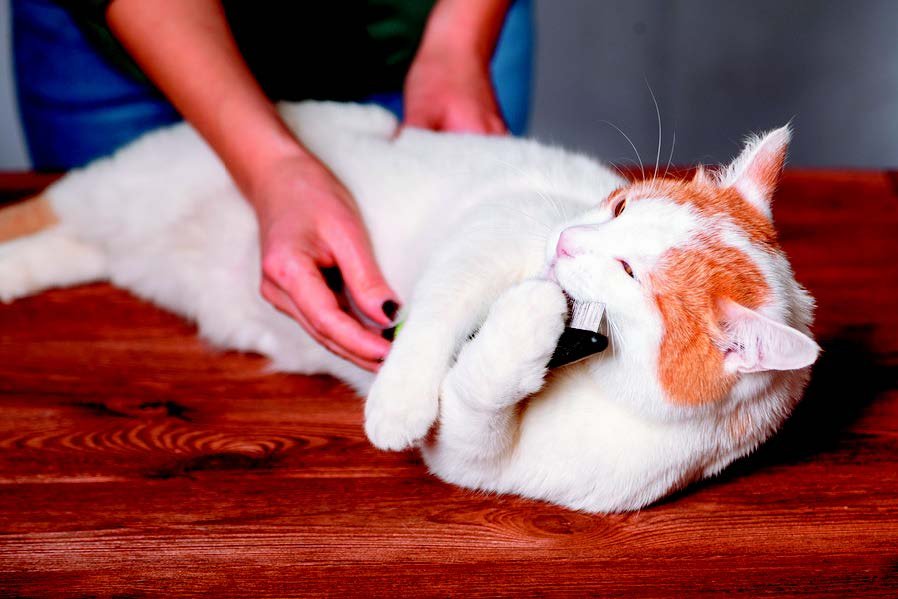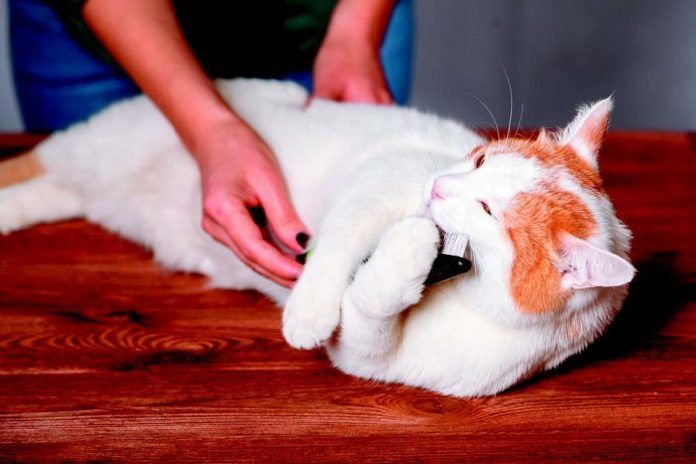
© yana_kallas | Bigstock
Massage therapy for cats can ease the pain and lack of mobility related to a number of conditions, says Lisa Ruthig, chair of the National Board of Certification for Animal Acupressure and Massage, and director of Animal Programs at the Bancroft School of Animal Massage in Worcester, Massachusetts. These include arthritis, post-operative pain, muscle strain, and even aggressiveness stemming from anxiety.
While the mechanism by which massage relieves pain is not fully understood, Ms. Ruthig says that “we think it’s all about the sensations of pleasure and pressure, making less room for pain to be appreciated.” The proposed process is often referred to as the gate theory. Only so many neurological signals can make it through the gate at once, so the sensations of pleasure and pressure crowd out sensations of pain. For some cats, it works so well that they are finally able to settle down at night for restorative sleep.
What feline massage looks like
You might wonder how a cat can handle massage when so many cats will swat at you even after a bit of brief petting. But massage provides a very different sensation. While petting is usually light and stimulates the nervous system, massage is slow, deliberate, and with moderate depth, which instead relaxes the nervous system, Ms. Ruthig says. She tends to start by stroking the cat’s face, and when she sees the animal has become receptive, moves on to other parts of the body the patient allows her to touch. Typically, cats accept touching on the neck, back, and tail base much more readily than the legs and belly.
“Some cats allow passive range of motion,” Ms. Ruthig says. “I can move their joints without any effort on their part, which is great for increasing range of motion. I watch for behavioral signals to tell me when they need a break or a different approach.”
Benefits may last as little as a few hours in some cases, but pet “parents” can easily be taught by a feline massage practitioner how to provide certain levels of massage at home to give periodic relief from discomfort or outright pain, or just to relax their cat.
One cat’s story
For Sandy Decubellis of Putnam, Connecticut, feline massage therapy changed the life of her 13-year-old, Baby Kitty. Before her cat started going for massage therapy, his daily movements were confined to painful visits to his food bowl and litter box. But once he started to see a massage therapist, he was able to move around more freely and even jump to cozy spots he hadn’t been able to reach for quite a while. “I hadn’t seen Baby Kitty curled up looking very comfortable sleeping on the couch in a very long time,” says Ms. Decubellis. “I never thought he would be able to climb up and maneuver into his favorite spot for his afternoon nap again.”
If you’re thinking of taking your cat to a massage practitioner
More and more veterinarians are recommending massage practitioners for their feline patients, but you may decide to bring your cat on your own (and some practitioners will even come to your home, meaning less stress for your pet). Whether prescribed by a vet or not, be aware that massage therapy is always adjunctive therapy to treat a condition, so much so that Ms. Ruthig will not provide massage for a cat who has not first been seen and diagnosed by a veterinarian.
You want to look for someone who has had at least 200 hours of training. That’s what is required by the National Board of Certification for Animal Acupressure and Massage. And all the training should be hands-on, not just watching videos of people conducting animal massage. That’s the best way to trust that the person handling your cat is handling him correctly.




